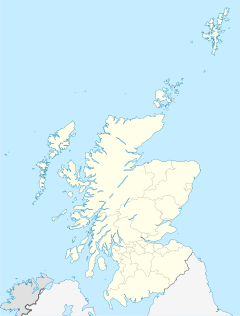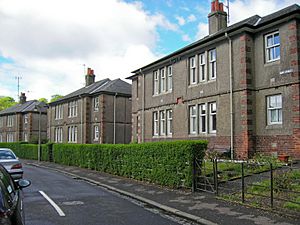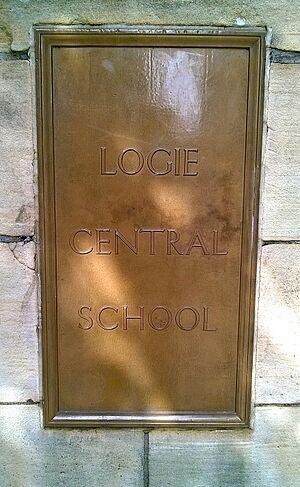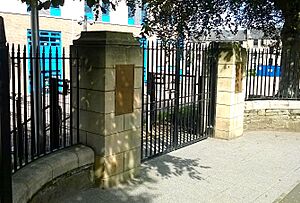Logie, Dundee facts for kids
Quick facts for kids Logie
|
|
|---|---|
| Population | 4,666 |
| OS grid reference | NO383304 |
| Council area | |
| Lieutenancy area | |
| Country | Scotland |
| Sovereign state | United Kingdom |
| Post town | DUNDEE |
| Postcode district | DD2 |
| Dialling code | 01382 |
| Ambulance | Scottish |
| EU Parliament | Scotland |
| UK Parliament |
|
| Scottish Parliament |
|
Logie is a residential area in Dundee, Scotland. It's a place where many people live. You can find it north of Blackness Road, bordered by Blackness Road, Balgay Road, Scott Street, and Glenagnes Road.
Contents
What's in a Name? The Story of Logie
The name Logie likely comes from a very old word. It might be from the Pictish language or Scottish Gaelic. It probably meant something like "church site" or "religious place."
Logie's Past: From Estate to Homes
For a long time, the land where Logie is today was a large estate. Records show that different families owned this estate from at least the year 1660. The Wedderburn baronets were one of the families connected to it. There was a big mansion house on the estate, but it was taken down in 1905.
Logie Housing Estate: Homes for Heroes
The most important part of Logie is its housing estate. This area was built between 1919 and 1920. It was designed by an architect named James Thomson. This estate was very special because it was the first public housing estate built in Scotland. It was created after the First World War as part of a plan for "Homes fit for heroes."
Heating Homes in Logie
The Logie estate was also one of the first places in Europe to have a district heating system. This meant that heat for all the homes came from one central boilerhouse. This boilerhouse also had a public wash-house that people from the surrounding area could use. An interesting fact was that the pipes carrying the heat weren't very well insulated. This meant the heat escaped, and the snow on the pavements would melt! The district heating system was eventually closed in the late 1970s. After that, each house got its own central heating system.
Types of Homes in Logie
Most of the homes in Logie are flats. They are usually in blocks of four, with two flats upstairs and two downstairs. Each flat has its own front door, similar to what is called a "maisonette" in England. Many homes have three rooms (a living room and two bedrooms) plus a kitchen and bathroom. Some have two rooms (a living room and one bedroom) with a kitchen and bathroom.
Besides shared drying areas, each house originally had a small allotment garden. Many of these small gardens have now been turned into grassed areas.
Logie Avenue and Conservation
The estate is divided by a wide, tree-lined road called Logie Avenue. At the upper end of this road, near Victoria Park, there was a special viewpoint. In 1991, the Logie estate was named an "outstanding" conservation area. This means the area's special look and feel are protected. The houses have simple but effective brick details. Even the garden fences, gates, address plates, railings, steps, and paths were carefully designed. This gives the whole area a wonderful, unified look that is still clear today.
Logie School and Logie Poorhouse
Next to the housing estate, at the corner of Blackness Road and Glenagnes Road, was Logie secondary school. This school later became the Annexe for Harris Academy. C.G. Soutar designed it, and it opened in 1928.
From Poorhouse to School
The school was built on the site of the Logie poorhouse. A poorhouse was a place where people who were very poor could live and work. This poorhouse for Liff & Benvie Parish opened in April 1864. Sadly, the Logie school was destroyed by a fire in 2001. A new combined primary school is being built on the site in 2012. This new school will replace Park Place and St Joseph's primary schools.





